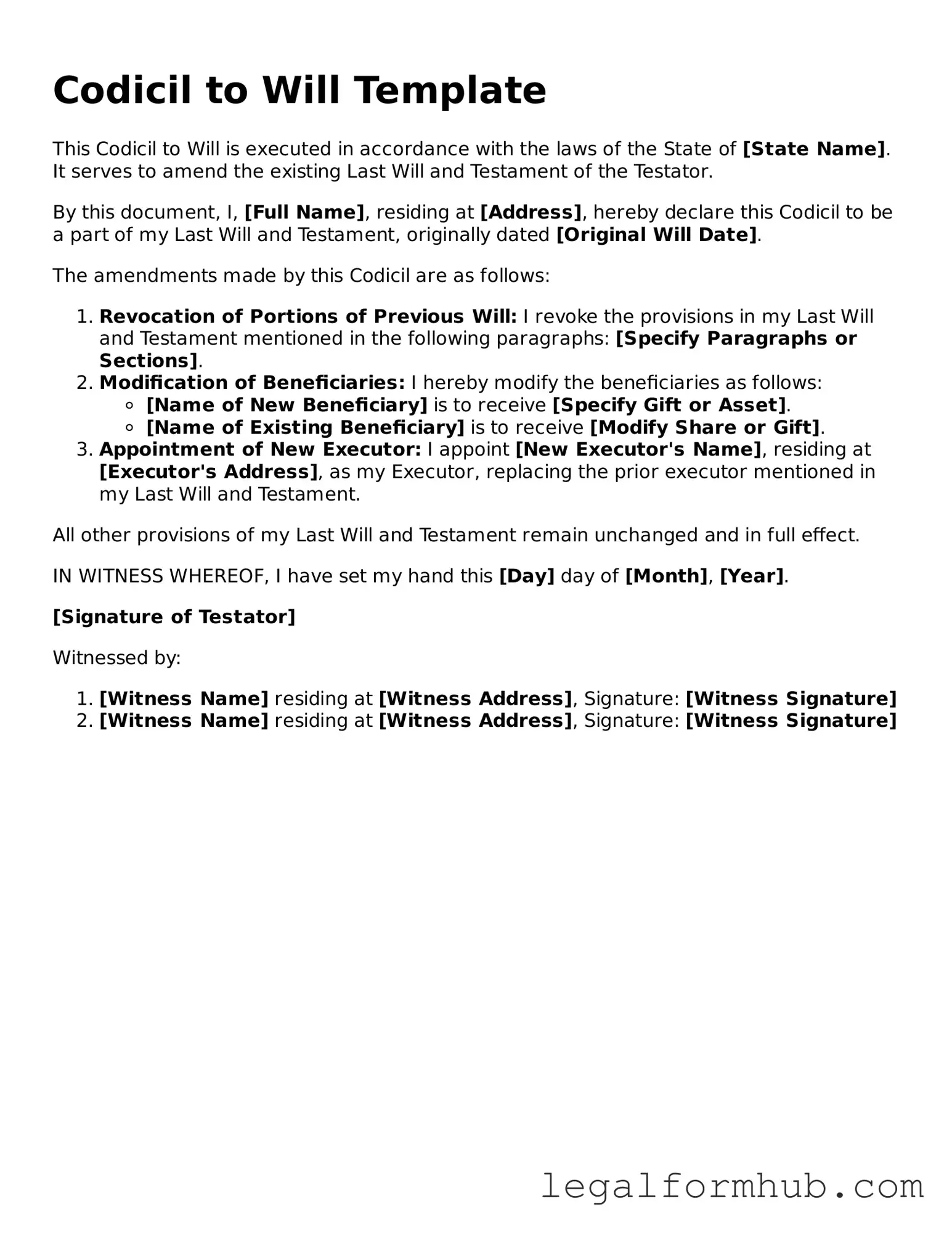The Codicil to Will form is similar to a Living Will, which outlines an individual's preferences regarding medical treatment in the event they become unable to communicate their wishes. Both documents serve to clarify an individual's intentions. While a Codicil modifies or adds to an existing will, a Living Will focuses specifically on healthcare decisions. Each document must be executed according to state laws to ensure they are valid and enforceable. Both serve crucial roles in ensuring that a person's wishes are respected, whether in matters of estate distribution or medical care.
Another document that shares similarities with the Codicil is the Power of Attorney. This form allows an individual to designate someone else to make decisions on their behalf, particularly in financial or legal matters. Like a Codicil, a Power of Attorney can be updated or revoked as circumstances change. The key difference lies in the scope of authority; a Codicil addresses estate planning, while a Power of Attorney pertains to decision-making during an individual's lifetime. Both documents require careful consideration and proper execution to be effective.
The Revocable Trust is another estate planning tool that bears resemblance to a Codicil. A Revocable Trust allows an individual to transfer assets into a trust while retaining control over them during their lifetime. Similar to a Codicil, it can be amended or revoked as needed. However, the primary distinction is that a Revocable Trust can help avoid probate, while a Codicil modifies a will that may still require probate proceedings. Both documents aim to ensure that a person’s wishes regarding their assets are honored after their passing.
Next, the Last Will and Testament itself is inherently linked to the Codicil. The Codicil acts as an amendment to the Last Will, allowing for updates without the need to create an entirely new document. This relationship emphasizes the importance of clarity and precision in estate planning. Both documents must be executed following specific legal requirements to ensure they are valid. Together, they work to reflect an individual's final wishes regarding asset distribution and other important matters.
To ensure that your final wishes are clearly communicated and respected, it's vital to complete the necessary legal documents such as a Last Will and Testament. This document not only outlines the distribution of your assets but also serves to address the care of dependents. For those looking to streamline the process, you can utilize services like Fill PDF Forms to get started on creating your will today.
A Trust Amendment also shares similarities with a Codicil. When changes need to be made to a trust document, a Trust Amendment serves as the mechanism for those updates. Like a Codicil, it allows for adjustments without creating a new legal document from scratch. Both tools facilitate flexibility in estate planning, ensuring that the individual's current wishes are accurately reflected. However, the main focus of a Trust Amendment is on the terms of the trust itself, rather than the distribution of assets after death.
Finally, a Healthcare Proxy is akin to a Codicil in that it designates someone to make medical decisions on behalf of another individual. Both documents require careful consideration of whom to trust with these important responsibilities. While a Codicil deals with estate distribution, a Healthcare Proxy focuses on healthcare decisions. Each document must comply with state laws to ensure they are legally binding and can be relied upon when needed. Together, they form a comprehensive approach to personal decision-making in both health and estate matters.
